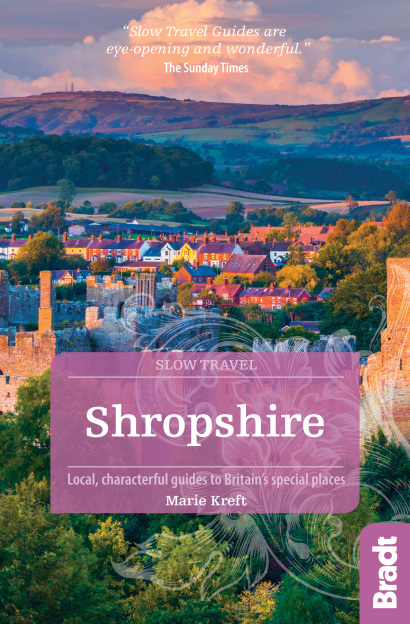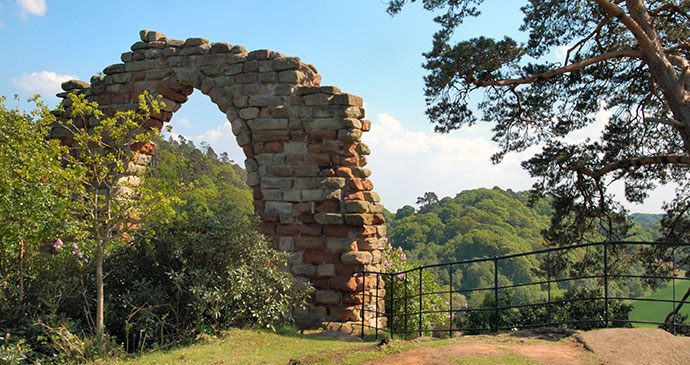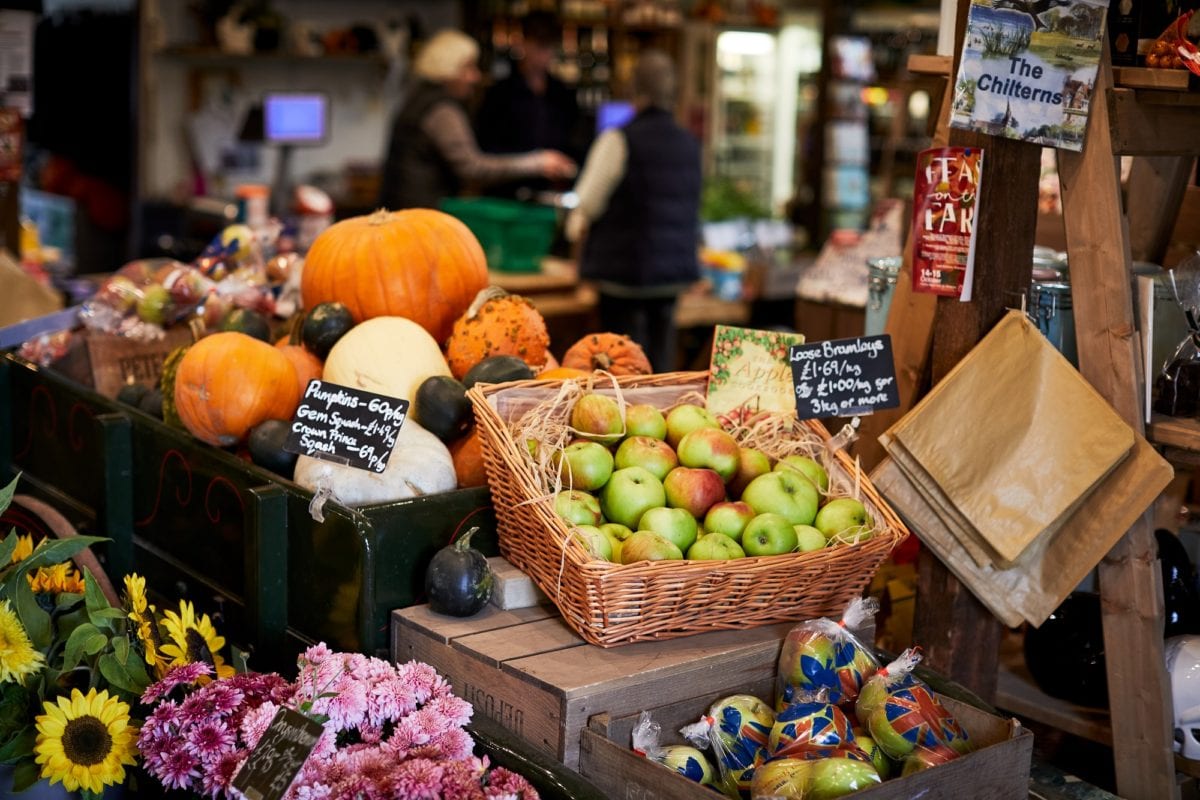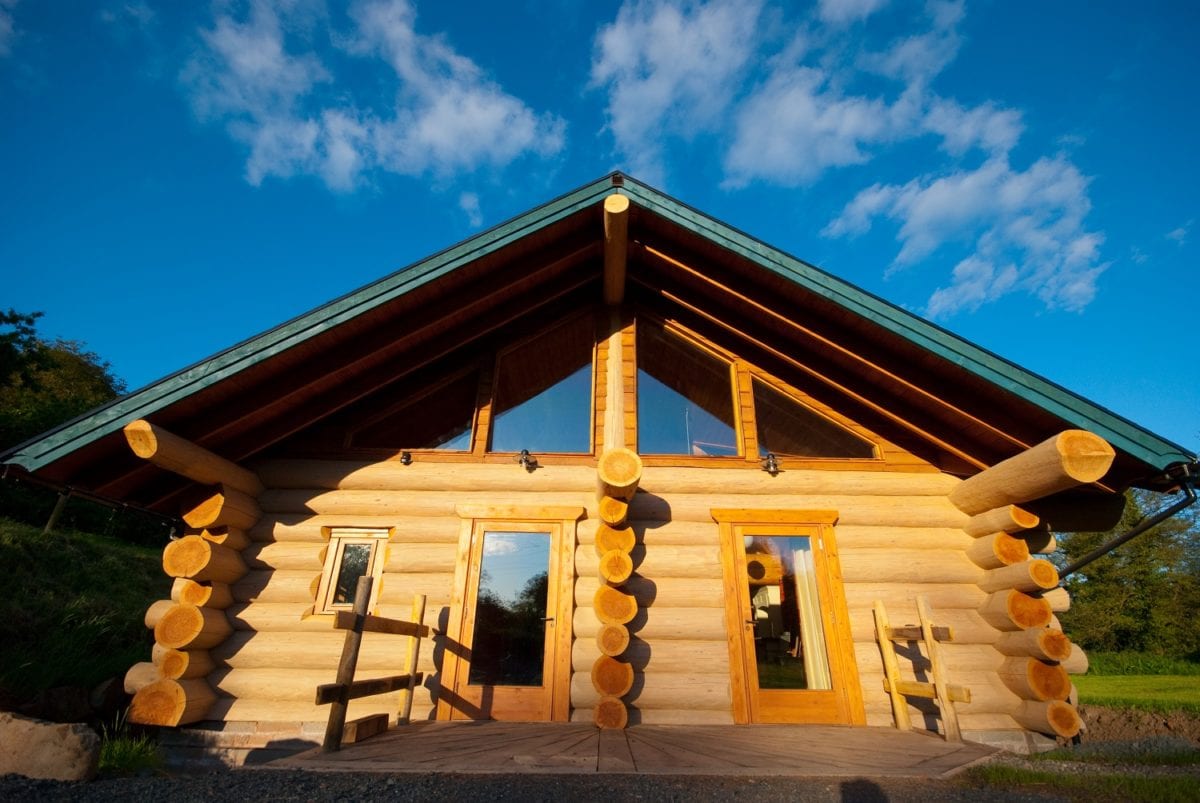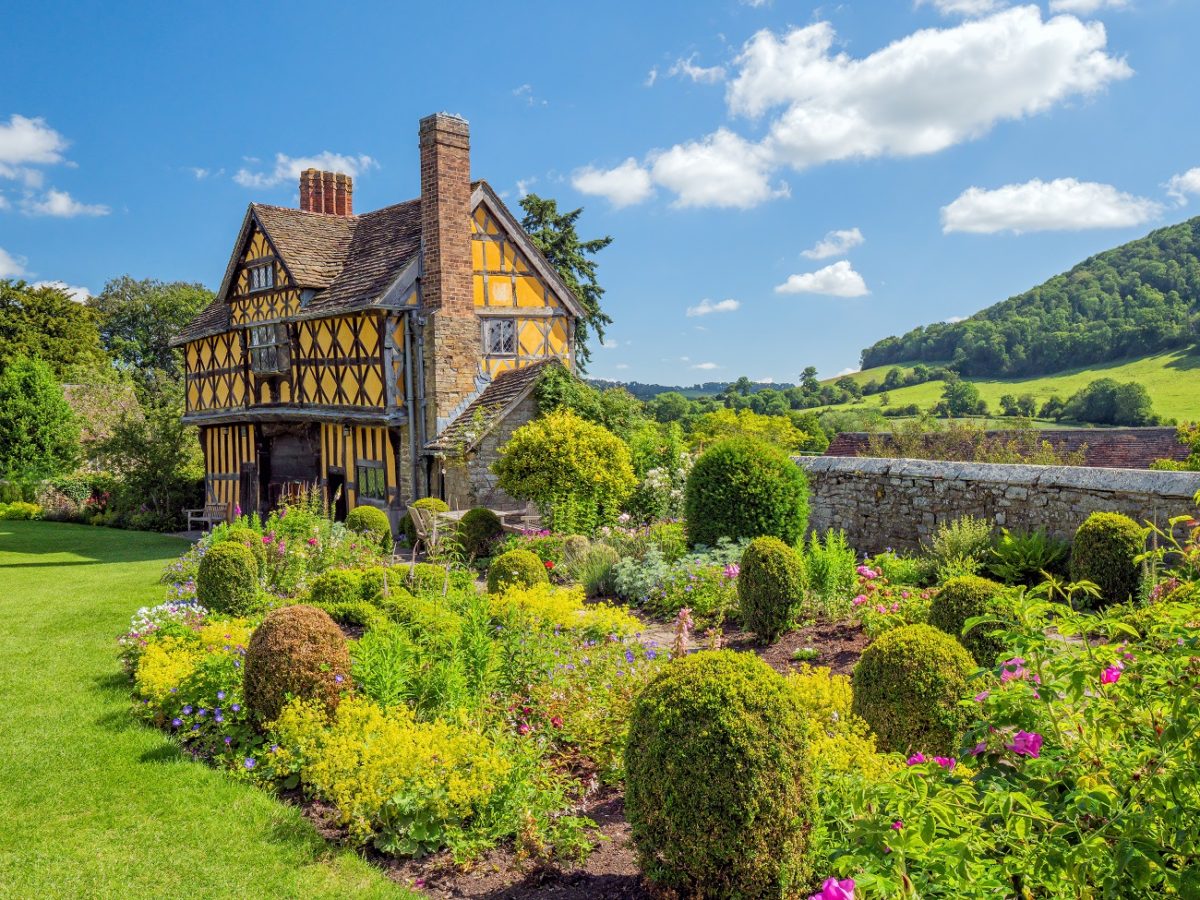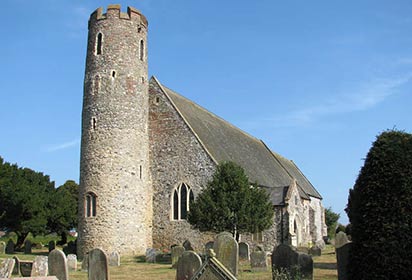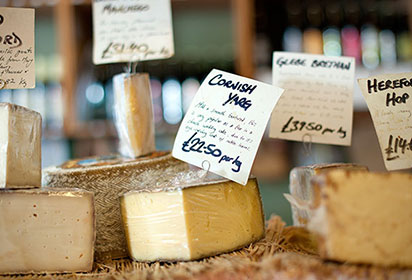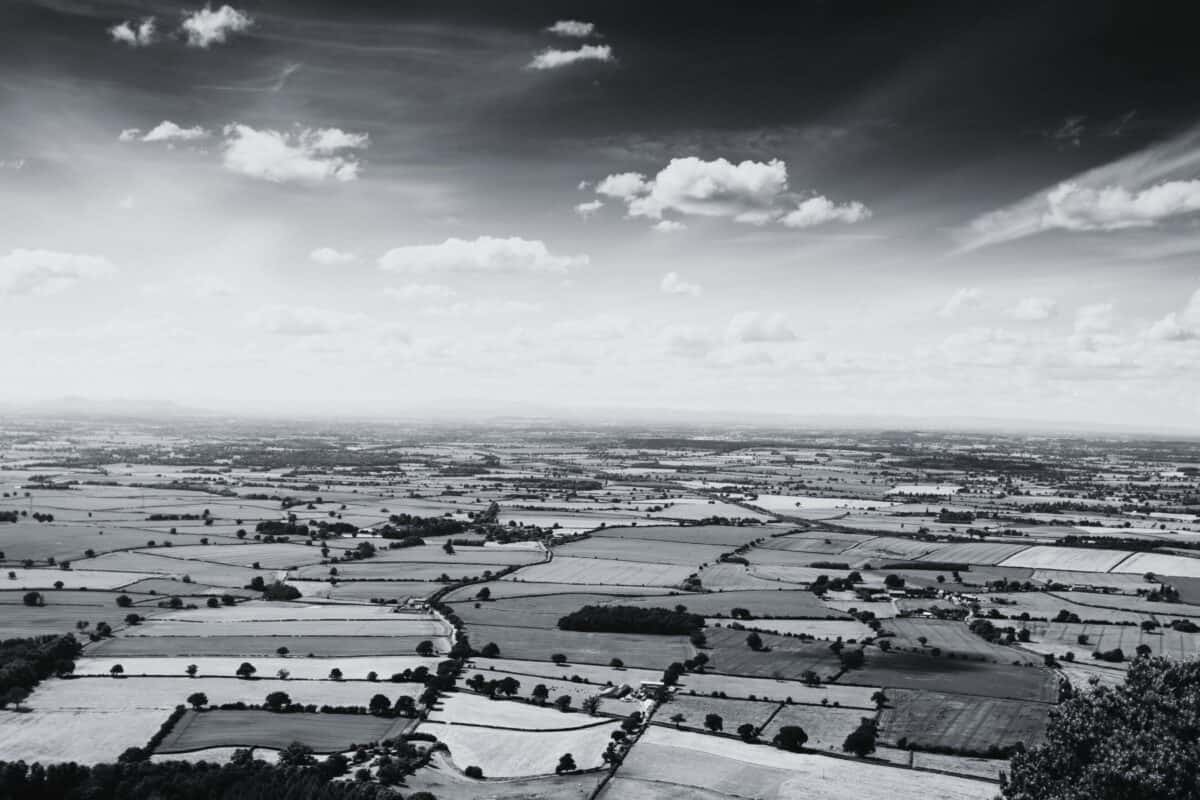Whether you’re here for a day, a weekend break or an entire holiday (lucky you), Shropshire is a destination with infinite possibilities.
Marie Kreft, author of Slow Travel Shropshire: the Bradt Guide
“Hello, Shropshire.”
That’s the moment you feel your shoulders dropping as miles of countryside, woodland, hills, footpaths and bridleways unfurl before your eyes. A land promising adventures, nurturing wildlife and yielding some of the finest farm produce found anywhere.
Shropshire’s unspoilt landscape makes it easy for you to reach back and touch the past. Its border with Wales has left a scattering of medieval castles and castle ruins; stories of battles and feuds. In hillforts and earthworks, towns and churches, the county has tangible traces of Bronze Age, Iron Age, Roman, Saxon and Norman history.
But that’s not all – Shropshire was at the epicentre of the Industrial Revolution, leaving a legacy you can explore at ten museums in a UNESCO World Heritage site. Shrewsbury, now blessed with elegant independent shops and exciting restaurants, was the birthplace of Charles Darwin. In charmingly sleepy Much Wenlock, a Victorian doctor inspired the revival of the modern-day Olympics.
Whether you’re here for a day, a weekend break or an entire holiday (lucky you), Shropshire is a destination with infinite possibilities. Fall in love with Ludlow, a gourmet town and home of the country’s first food festival. Climb The Wrekin, Shropshire’s ‘little mountain’, or follow Offa’s Dyke Path.
Travel on a heritage steam railway, hide in Georgian follies, discover an unusual grave or uncover the intrigues of stately homes. Slow down, drink beer, eat cheese, muddy your wellies, hire a narrowboat, stargaze, ride a horse, fly a hawk. And smile, because you’re in on one of England’s greatest counties.
Bradt on Britain – our Slow Travel approach
Bradt’s coverage of Britain’s regions makes ‘Slow Travel’ its focus. To us, Slow Travel means ditching the tourist ticklists – deciding not to try to see ‘too much’ – and instead taking time to get properly under the skin of a special region. You don’t have to travel at a snail’s pace: you just have to allow yourself to savour the moment, appreciate the local differences that create a sense of place, and celebrate its food, people and traditions.
For more information, check out our guide to Shropshire
Food and drink in Shropshire
Savouring the taste of Shropshire
It may not seem true when we visit supermarket chains, stocked as they are with air-flown produce and international brands, but in the past decade Britain has undergone a quiet food revolution. We’re rediscovering, where practical and affordable, the importance and pleasures of the local, the seasonal and often the organic. We’re more aware of the unnaturalness in eating Peru-grown asparagus with our Christmas dinner, and enjoying food and drink in the way it was grown, sold and consumed in the not too distant past.
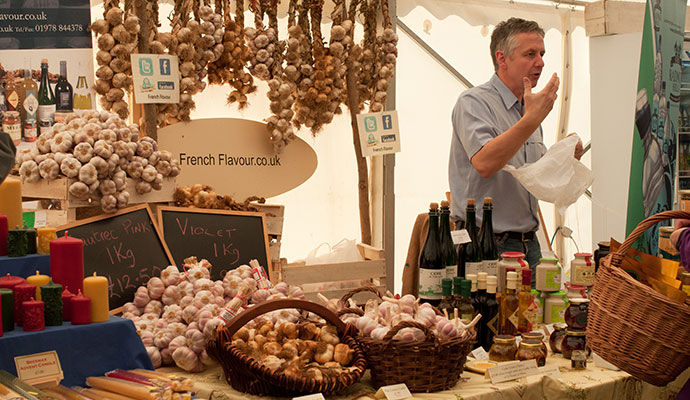
In parts of Shropshire, where supermarkets are few and far between, one gets the impression that local sourcing has always been the norm; that the rest of the country is simply returning to this older, yet more enlightened, way of thinking. Farmers’ markets aren’t just a Saturday morning treat for middle-class hipsters (although I promise you’ll find some very rock’n’roll cheese in Shropshire) – rather they’re reflective of the way things have always been done. And all around the county you’ll find beautifully presented farm shops; food festivals (including the country’s first, the Ludlow Food Festival in mid September) and innovative chefs pushing at the boundaries of what can be achieved with produce from Shropshire and its neighbouring counties.
Farmers’ markets
Shopping at farmers’ markets is a great way to source fresh food that hasn’t racked up many miles, boost Shropshire’s rural economy, help to preserve environmentally friendly small-scale production, and meet the people who made, grew or raised your lunch. Here’s a guide to when and where you’ll find farmers’ markets (the day refers to its place in the month). Most towns have other markets, too, often selling farm produce, so please don’t assume this list is exhaustive:
Bishop’s Castle third Sat, 09.00–14.00, Town Hall & Market Square
Cleobury Mortimer third Sat (April to October), 09.30–12.30, in and around St Mary’s Church
Craven Arms first Sat, 09.00–14.00, Shropshire Hills Discovery Centre car park
Ironbridge first Sun (May–Oct), 10.00–15.00, The Wharfage car park
Ludlow: second and fourth Thu, 09.00–14.00, Castle Square
Market Drayton: quarterly on Sun, 10.00–14.00
Much Wenlock: first and third Fri, 09.00–13.00, The Guildhall
Oswestry: last Fri, 09.00–13.00, Bailey Head
Shrewsbury: first Fri, 09.00–16.00, The Square
Wellington: first & third Sat, 09.00–13.00, High Street and Wellington Community Centre
Whitchurch: first Sat, 08.30–14.00, The Bullring
When to visit Shropshire
Maybe it’s due to the county’s rural farming heritage: Shropshire’s calendar is illuminated with festivals and fairs, celebrating everything from flowers, steam machinery and ale to sweet peas, coracles and storytelling.
On May Day in Clun a fight on the packhorse bridge between the Green Man and the Frost Queen determines whether summer comes to the Clun Valley. Nearby Aston on Clun is thought to be the only village that still celebrates Arbor Day (or Oak Apple Day), an ancient tree-dressing custom that also commemorates the oak tree which shielded Charles II from Parliamentarians.
Slow Travel Shropshire lists many events held in Shropshire throughout the year. Here’s some inspiration for things to do each month:
January
Start the new year with a scramble up Shropshire’s ‘little mountain’
The Wrekin is arguably Shropshire’s most famous landmark, rising surprisingly from a flat plain, and being the very embodiment of home to many Salopians. Scaling steep paths through oak woods to reach The Wrekin’s heathland summit is a popular activity all year round, but especially on Boxing Day and New Year’s Day.
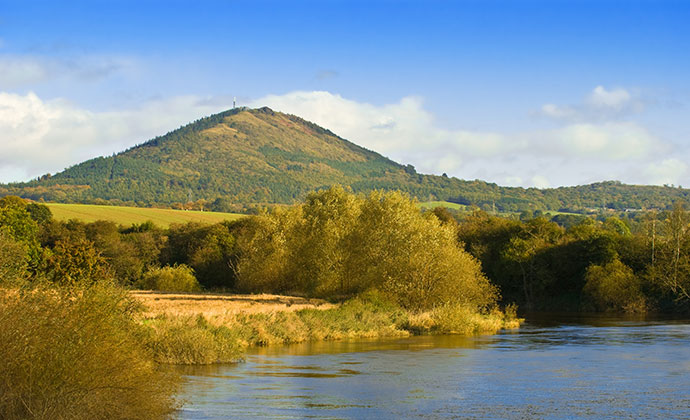
Standing on top, looking out over 15 counties on a clear day (some say 17), leaves you feeling you’re at the edge of the world.
February
Celebrate the man who changed our understanding of the natural world
Charles Darwin was born in Shrewsbury in 1809. Every year on his birthday – 12 February – a toast at midday marks the beginning of the Darwin Festival, a two-day event comprising walks, lectures and children’s events around the town.
March
Embark on a cinematic journey in small venues around the county
In February and March, the Borderlines Film Festival brings an exciting line-up of independent films to village halls, small cinemas and other rural venues across Shropshire, Herefordshire and the Marches.
May
Ignite a lifelong love for reading in someone small
The country’s first and longest-running literary festival just for children, Shropshire Bookfest has been bringing well-loved authors and illustrators to Shropshire each May since 1999. With Jacqueline Wilson as president and Michael Morpurgo as patron, the festival never fails to meet its aim of ‘enthusing, engaging and entertaining children through literature and live arts’.
June
Explore the Blue Remembered Hills with old and new friends
Shropshire hosts several walking festivals during the fair months (see also Bishop’s Castle, Ironbridge and Wellington); in June it’s the turn of Church Stretton Walking Festival, with walks of varying intensity and differing themes. Organised walks are an insightful way to see Shropshire at the right pace with people who understand its geology, history and wildlife – and, I find, often conducive to easy conversation.
July
See where the modern Olympic games began
In 1850 Dr William Penny Brookes founded the Wenlock Olympian Games, to ‘promote the moral and physical benefits of exercise’ to the people of Much Wenlock. The event then went on to inspire the revival of the world Olympics in 1896. The Wenlock Olympian Games are still going strong today, held on Much Wenlock’s Gaskell Field every July.
August
Catch some of the best live folk music from the UK and beyond
The friendly, eclectic and dynamic Shrewsbury Folk Festival takes place over the August Bank Holiday weekend, attracting many of the best new and established folk artists to Shropshire’s county town. Book early as tickets tend to sell out.

(Photo: Demonstrations from a chef at Ludlow Food Festival © Ludlow Food Festival)
September
Eat and drink the region’s tastiest produce at the country’s first food fair
The UK’s first food festival and perhaps the most famous, Ludlow Food Festival takes over the medieval hilltop town just as autumn casts her first golden glow over south Shropshire and summer gives up her harvest. It’s centred on the castle grounds, but trails take visitors into shops and pubs around Ludlow, in search of the best sausages, artisan bread and real ale.
October
Support a lively literary festival in an unsung Shropshire town
Wellington is often overlooked by the tourist trail, but with several real-ale pubs, a recently revived brewery and an abundance of walking opportunities stretching out from the town centre, it deserves more attention from visitors and Salopians alike. In October, the town council’s Annual Literary Festival brings local and national writers to Wellington venues – and every event is free of charge.
November
Find the perfect excuse to eat (and drink) chocolate
In November 2014, Shrewsbury chocolatier Julia Wenlock staged the first Shrewsbury Chocolate Festival in the Church of St Mary the Virgin – a dazzling example of a complete medieval church (look for the plaque to Admiral Benbow).
The festival celebrated the finest chocolatiers from Shropshire and beyond, and looks set to grow in popularity year on year. Step in from the November cold and warm your hands (and insides!) with a cup of chocolate-infused mulled wine.
December
Get set for Christmas
There’s no shortage of Christmassy events in Shropshire during the festive season, and valuable places to find out what’s happening include the Shropshire Events and What’s On Guide. One place you can rely on for festive spirit is the National Trust-managed Sunnycroft, near Wellington, which is dressed for a traditional Edwardian Christmas every year – there may well be twinkly tree lights, choirs, and wreath-making workshops.
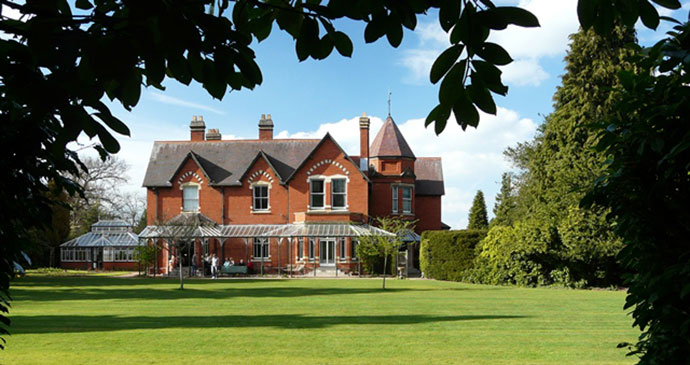
Look out also for A Christmas Carol walking tours of Shrewsbury, celebrating the production filmed in the town in 1984. Although that’s over 30 years ago, it’s still relevant today if you’re interested in architecture, Dickens or the logistics of producing a feature-length film in narrow medieval streets.
Where to stay in Shropshire
For information about accommodation, see our list of the best places to stay in Shropshire.
What to see and do in Shropshire
Ironbridge Gorge & The Wrekin
In Coalbrookdale, Shropshire in 1709 an entrepreneur named Abraham Darby first produced pig iron in a coke-fuelled blast furnace. He wasn’t looking to set the world alight (and nor was his discovery the only spark that ignited it); rather he wanted to find an easier, cheaper and less labour-intensive way of casting ‘iron bellied potts’. Nevertheless, Darby’s breakthrough also set into motion the principles of mass production, contributing greatly to the Industrial Revolution. After the first cast iron hollowware followed the first iron barge, the first iron bridge, the first rail locomotive, all dreamed up in these few square miles. It’s no exaggeration to say Ironbridge Gorge – then called Severn Gorge – was the birthplace of heavy modern industry, paving the way for much that we now take for granted.
At the peak of the Industrial Revolution, the story of the gorge was already thousands of years old. Back, back in time, during the last glacial age, thick ice sheets forged the deep valley, slicing through Wenlock Edge, forming what would become the River Severn and revealing limestone, coal, iron stone and clay. It’s as though Nature, having shifted and shaped this patch of Earth, creating a perfect transport network and revealing perfect raw materials, sat back and waited 19,000 years for humans to realise their good fortune.
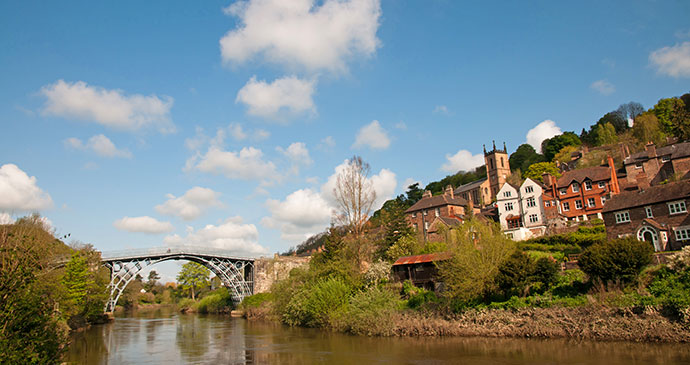
And when we view time in those vast, unwieldy, geological terms, it’s humbling to think that an entire industrial world sprung up and declined in Shropshire in the blow of a hammer, the turn of a flywheel. A relative few frenzied years of innovation, changing human destiny forever, and then industry focus moved elsewhere: production shifted to south Wales and the Black Country. Ironbridge Gorge retained an important trade in ornamental castings and tiles, but by the mid 20th century was in slow decline. People moved away and many factories, warehouses and workshops would become dilapidated.
Luckily for us, Nature was swift to reclaim the gorge for her own, repopulating the slopes of the valley with dense woodland, returning dragonflies and damselflies to the river, bringing wildflower meadows alive once again with cowslips, daisies, orchids and vetches upon which bees and butterflies feast. The topographer Edmund Vale in 1949 wrote of the ‘endless tips and spoil-banks’ that proved to be ‘of a nature kindly to vegetation’ and that 50 years’ growth, even then, meant the ‘gorge is once more a beautiful place, and the nightingale sings above the toll-house of the iron bridge’. The flora and fauna became jewels in the crown of a place that, in the 1960s when ‘Telford New Town’ was emerging from blueprints, became a source of interest rather than dereliction and shame. In 1986 Ironbridge Gorge was designated a World Heritage Site and visitor attractions grew up around it: shops, tea rooms, galleries and museums.
Shropshire’s industrial legacy is still evident too – and not only through books, wall plaques and the conservation efforts of UNESCO and the Ironbridge Gorge Museum Trust. In this region, we have former mining towns to explore, canals and towpaths, disused railway tracks (as well as the working sections lovingly restored by Telford Steam Railway). Even Telford, derided as it is by aesthetes, is a product of endeavour and ambition: the new-fangled vision that would relieve congestion in Birmingham and Wolverhampton. And there is no greater lasting symbol of innovation than the sublime 30-metre iron bridge, built in 1779 to showcase the genius of the Coalbrookdale ironmasters.
Mysterious surprises await at Hawkstone Park Follies © Visit Ironbridge
North Shropshire
It may not have the pull of the Shropshire Hills Area of Outstanding Natural Beauty, the industrial legacy of Ironbridge Gorge or the romance of the Offa’s Dyke Path through the Welsh Marches. But rural north Shropshire is full of natural wonders: nine glacial lakes known as meres, and scientifically important peat bogs (mosses) teeming with biodiversity. Its fertile soil and farming heritage yield delicious meat and produce.
North Shropshire has manmade beauty too: miles of canals and four market towns, Ellesmere, Wem, Whitchurch and Market Drayton, each distinctive in character. The latter is Robert Clive country, the stomping ground of a young ne’er do well who would grow up to become Commander in Chief of British India. It’s also known for gingerbread: Clive is thought to have brought ginger back to the town from his travels.
In this region we have a community-run organic farm which won a David-and-Goliath battle against a multinational corporation, its tenants aged just 19 and 21 when their plight began. Nearby in Market Drayton is Joule’s Brewery, reviving a tradition started by Augustinian monks (with a modern-day pledge never to sell to supermarkets). Other highlights include the Alice-in-Wonderland gardens of Wollerton Old Hall, 60 acres of landscaped splendour at Hodnet Hall and the country’s first ‘theme park’, beloved by Victorian pleasure-seekers, at the mysterious Hawkstone Park.
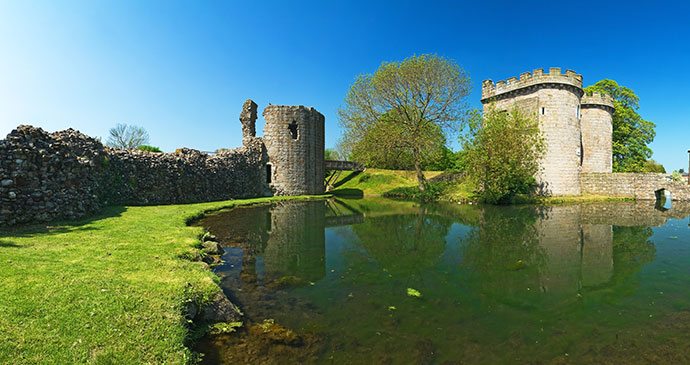
Oswestry & Northwest Shropshire
Until the 1536 Act of Union, Oswestry belonged to Wales. Nearly 500 years later many people here still identify as Welsh: you’ll overhear lovely lilting accents all over the region and see road signs rendered in Welsh as well as English. Life in this fiercely fought-over border country is peaceful now, of course, although I’ve seen some ITV regional news footage from 1972 in which several shoppers insisted Oswestry was in Wales and were surprised, if not affronted, to be told otherwise. Spectacular views over Cymru can be found at the churchyard in Welsh Frankton and on Racecourse Common. On the fourth hole at Llanymynech Golf Club you can tee off in England and putt out in Wales.
Nevertheless, the temptation to describe Oswestry (or Croesoswallt, to use its Welsh name) as a gateway to Wales serves an injustice to the many attractions within the English border, especially the town itself with its lively café culture, Wilfred Owen heritage and exceptional hillfort. At Whittington you’ll find Britain’s first community-run castle, while the partially restored Montgomery Canal allows us to enjoy a horse-drawn cruise. This compact region has several special churches, including the black-and-white oak-framed St Peter’s at Melverley and St John the Baptist, the ‘tin tabernacle’ in Maesbury. We also have heritage railways. The Cambrian Heritage Railway has a museum in Oswestry and operates rides from the town as well as at Llynclys. At the time of writing the group working to revive Tanat Valley Light Railway was building a new platform in time for the railway’s 150th anniversary; operating dates will be listed at www.nantmawrvisitorcentre.co.uk.
So don’t go racing up to Chirk or overlook Oswestry on your way to Lake Vyrnwy. Stay awhile, enjoy the scenery, meet the alpacas. This is England, but with a uniquely Welsh twist.
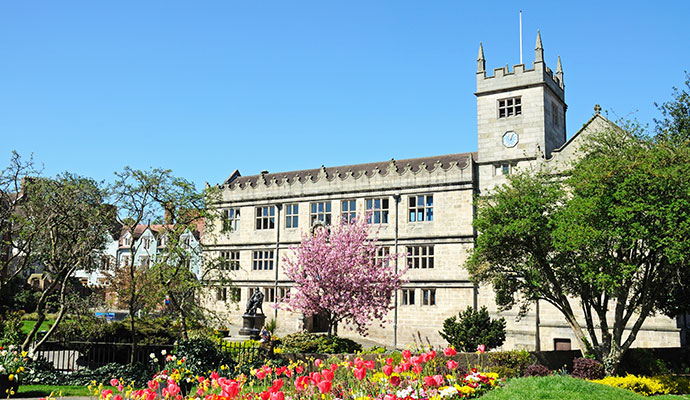
Shrewsbury & Mid Shropshire
As Shropshire is a land of contrasts, its centre – dominated by the genteel town of Shrewsbury – has a touch of everything great about the county: medieval architecture, ancient woodland, castle ruins and, to the south, Mary Webb country and some highly respectable hills.
Shrewsbury, declared by that famous scholar of art and architecture Nikolaus Pevsner to be a ‘fine example of a Tudor town’ is at the physical heart of the county and, for many, is where Shropshire’s emotional heart beats too. Salop, the old word for Shropshire, is sometimes used to mean Shrewsbury; it’s also the nickname of Shrewsbury Town Football Club, who play at New Meadow on the southern outskirts of the town. An old story goes that the oft-used term ‘Proud Salopians’ recalls the town burgesses’ refusal of Charles I’s (some say Henry VIII’s) offer to endow Shrewsbury with the status of a cathedral city, pleased with their town the way it was. And indeed there is much to be proud of now. As well as the castle, Quarry Park and excellent museum, Shrewsbury has a lively arts scene, many independent shops, and some outstanding places to dine and drink.
In 1809 Shrewsbury was the birthplace of Charles Darwin, the naturalist whose 1859 On the Origin of Species furthered our understanding of the creation of the world and every living being in it. Several walks and landmarks, outlined in this chapter, will guide you around his boyhood haunts.
Just outside the town is the site of the 1403 Battle of Shrewsbury, now a farm shop, visitor centre and award-winning café. Elsewhere in mid Shropshire we have the estate and Palladian-style manor house of Attingham Park, the Kiwi-style Jessamine Cottage Gardens, the remains of the fourth largest Roman city in Britain at Wroxeter – with a nearby vineyard – and the ruins of a fortified mansion, near to where Edward I assembled England’s first ever parliament.
South Shropshire
For many people, south Shropshire is the definitive Shropshire. Here are the ‘blue remembered hills’ of AE Housman’s poetry; the country that for Mary Webb ‘lies between the dimpled lands of England and the gaunt purple steeps of Wales – half in Faery and half out of it’. Much of this region is an Area of Outstanding Natural Beauty (AONB), designated in 1958 to protect and enhance the region’s celebrated hills, farmland, woods, valleys and batches, richly varied geology and diverse wildlife. From this natural geography we are given walks and views and abundant opportunities for quiet contemplation. From its conservation we enjoy fresh produce from local farms and smallholdings; the chance to see birds, butterflies and plants whose numbers elsewhere have diminished in the wake of development.
And from the human lives overlaid on the countryside’s natural beauty we have castles and market towns, striking black-and-white Tudor buildings, country houses with generations of intrigues. Going back earlier, we have ancient earthworks such as Offa’s Dyke, and the ‘sleeping war’ with Wales, sensed by the children in Sheena Porter’s 1964 Carnegie Award-winning Nordy Bank (named after the Iron Age hillfort on Brown Clee where they camp).
Here are the ‘blue remembered hills’ of AE Housman’s poetry; the country that for Mary Webb ‘lies between the dimpled lands of England and the gaunt purple steeps of Wales – half in Faery and half out of it’.
Major attractions in south Shropshire are Ludlow, a strikingly wellpreserved hilltop town popularly known as a foodie destination, Church Stretton, an excellent base for exploring the Shropshire Hills and Bishop’s Castle, home to Britain’s oldest working brewery. Clun is a favourite too, with a ruined castle and a literary heritage that punches above the town’s villagey character. Look beyond the obvious, and you’ll find a near-perfect Norman chapel in an ‘abandoned’ village, the disused workings of Europe’s most productive lead mine, and a late-Victorian mansion which took a starring role in a Hollywood film.
An excellent place to start your adventure would be the Shropshire Hills Discovery Centre in Craven Arms, where you can make a virtual balloon ride over the AONB, a panoramic film narrated by one of Shropshire’s beloved adopted sons, the late Pete Postlethwaite who spent his last years at Minton near Little Stretton.
When deciding where to shop, eat and drink, look for the Shropshire Hills Sustainable Business Scheme sticker. Businesses displaying it have pledged to take action to reduce their impact on the environment; enhance wildlife and landscape; involve local people and visitors; and support the local economy.
Southeast Shropshire
Displayed in Bridgnorth’s Northgate Museum is a 340-year-old faceless turret clock. In its glory days the clock sat high in a manor house called Larden Hall, now demolished, chiming out the hours for labourers in the fields. Well, perhaps not exact hours but as close to hours as its 17th-century foliot – an early kind of pendulum – could keep. I think it’s only right to take inspiration from the turret clock’s vague timekeeping while exploring this fascinating region.
We don’t have the dreaming hills of the south to unite the scenery or even the flattish rurality of the north. Nor do we have the turbulent history and romance of Welsh borders; Shropshire’s southeastern edges mingle with Staffordshire and Worcestershire, reaching into the Midlands’ industrial past. What we do have are many individual treasures to discover, brought together before a backdrop of twisty lanes, sleepy villages, characterful pubs. There are the spectacular highs and Bassa Villa lows of Bridgnorth; quietly important Much Wenlock; the Severn Valley Railway heritage line and the site of the Royal Oak which sheltered the future King Charles II as he bolted from Cromwell’s patrols. You’ll find English country mansions and rolling landscapes at Dudmaston and Weston Park; an Elizabethan manor house living out its latest chapter at Upton Cressett. And all around are tangible echoes of British history: the age of steam, the English Civil War, the Norman Conquest.
Going beyond the more obvious attractions will lead you to a quiet church in Astley Abbotts, where an 18th-century funeral garland tells the tragic tale of a bride who never saw her wedding day. It may take you in the footsteps of Charles Dickens as he wrote The Old Curiosity Shop, to the churchyard in Tong where Victorian tourists reputedly wept over a fictitious grave. It could show you the old railway town of Shifnal, birthplace of a maid named Hannah Cullwick, whose adult life would play out as one of Shropshire’s most intriguing love stories.
The more closely you look, the more secrets southeast Shropshire yields. This is a perfect reason to slow down and be guided simply by your appetite for eating and daylight for walking. Like the turret clock, a mere grasp of the hours is all the timekeeping you’ll need …
Related books
For more information, see our guide to Shropshire:
Related articles
Ideal for picking up some produce for a picnic or a family day out.
The cosiest and most luxurious lodges, cottages and cabins in the region.
Castles, commons and pop culture: Ludlow has it all.
Some people go to church, others go to churches.
Author Marie Kreft made many food and drink discoveries while exploring Shropshire.
To this day, the ghost of Paul Holymard is said to still stalk to ruined walls of Moreton Corbet Castle.
